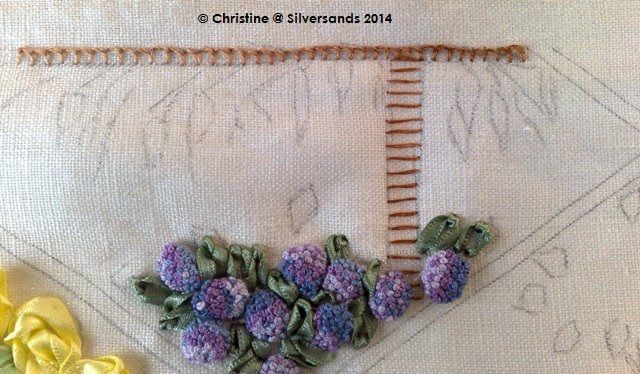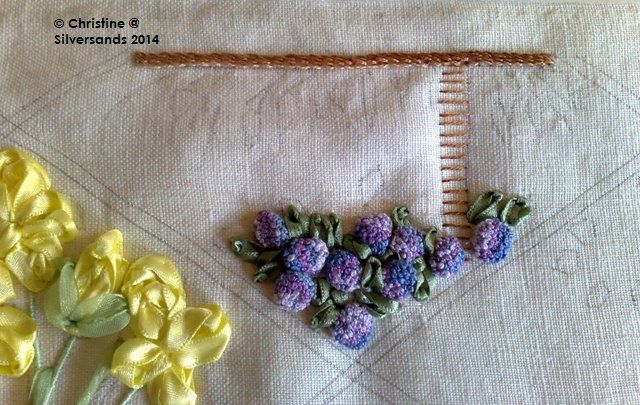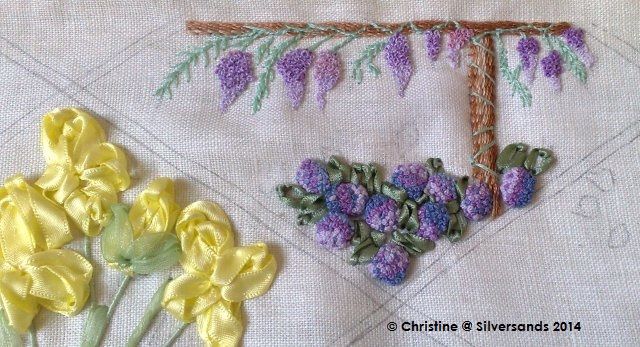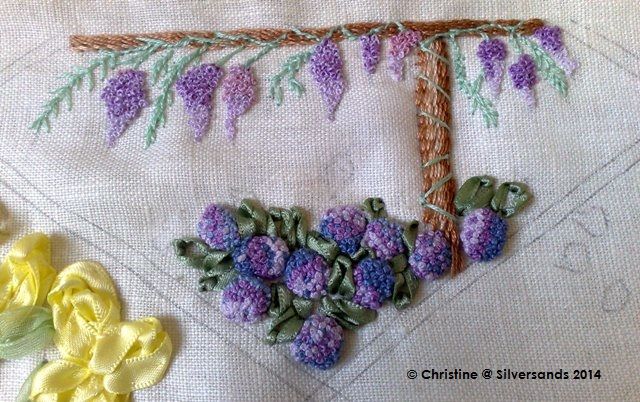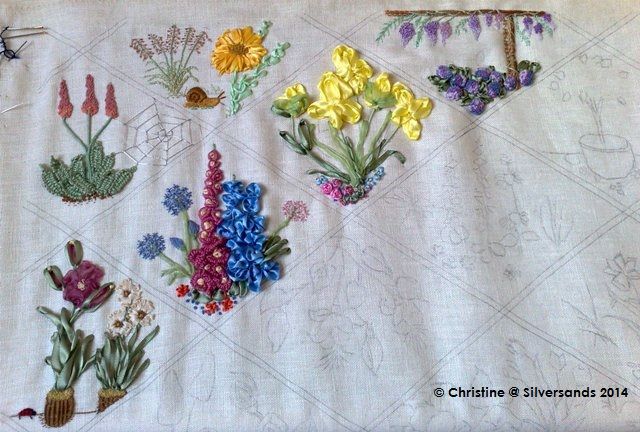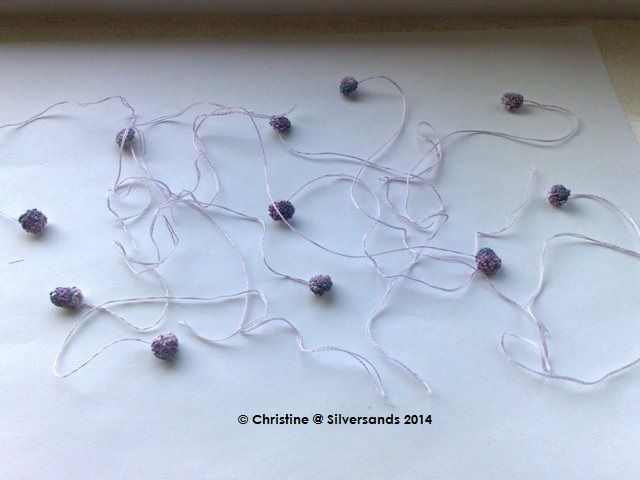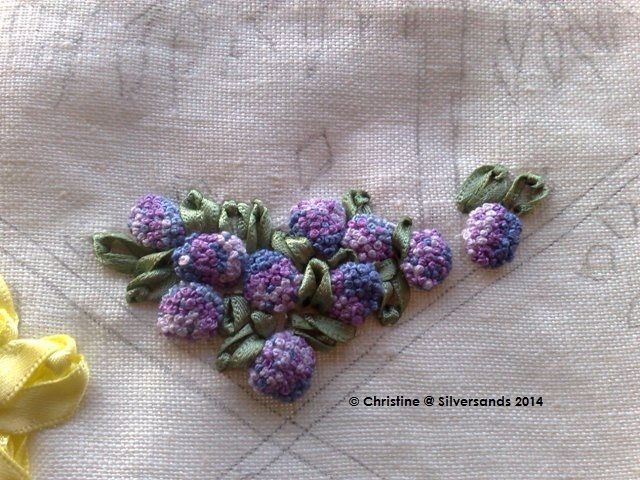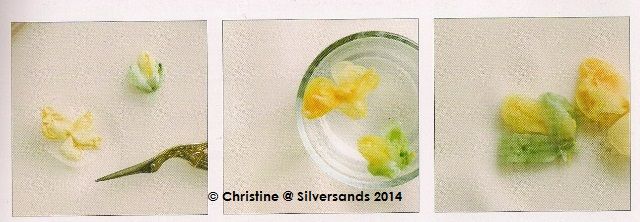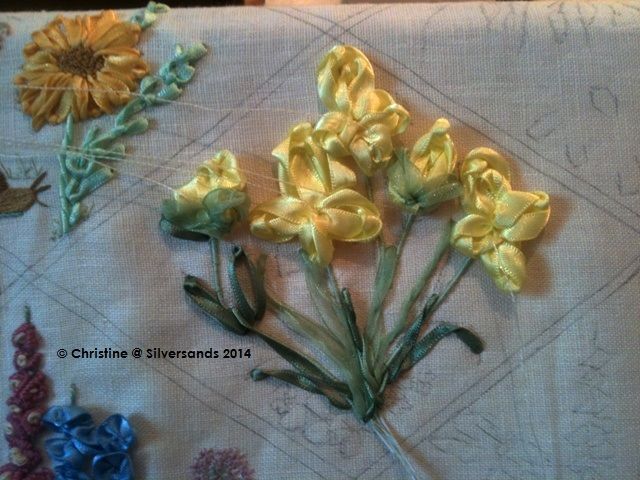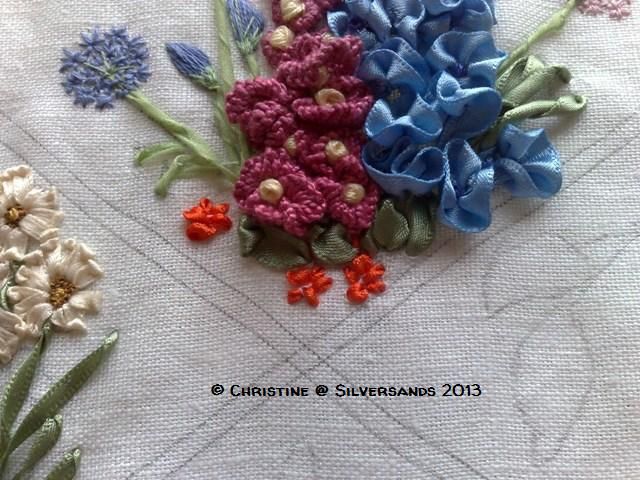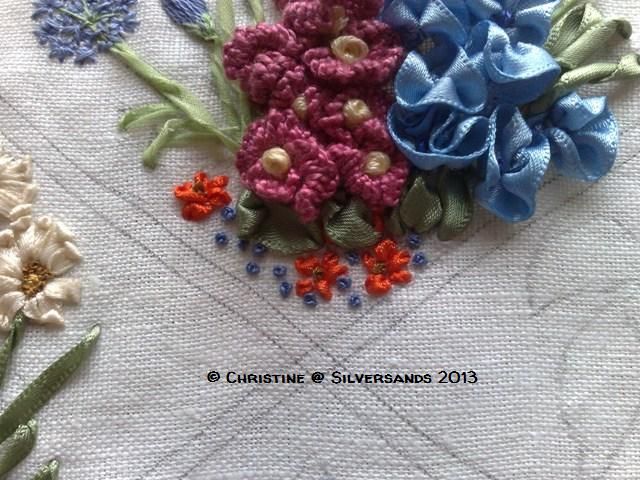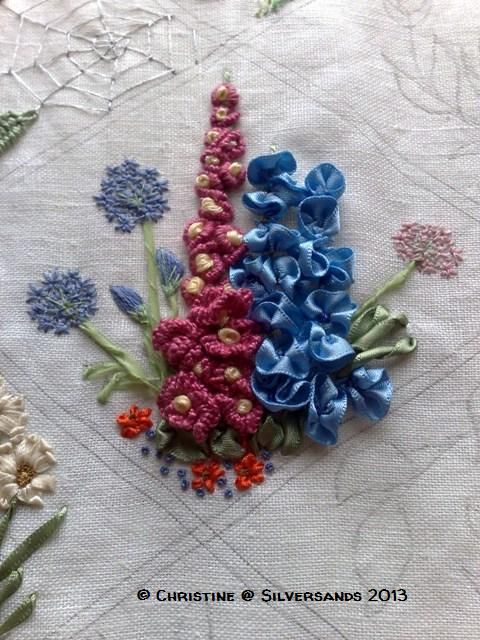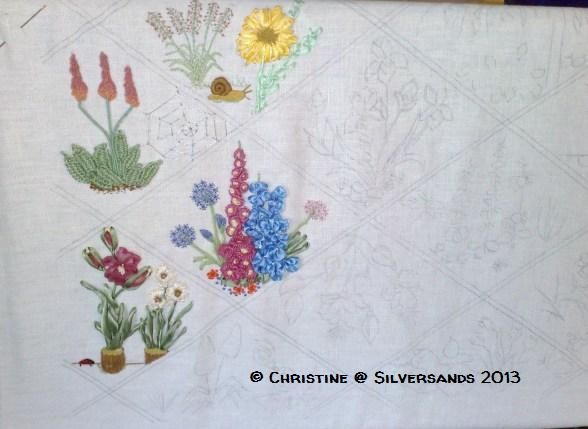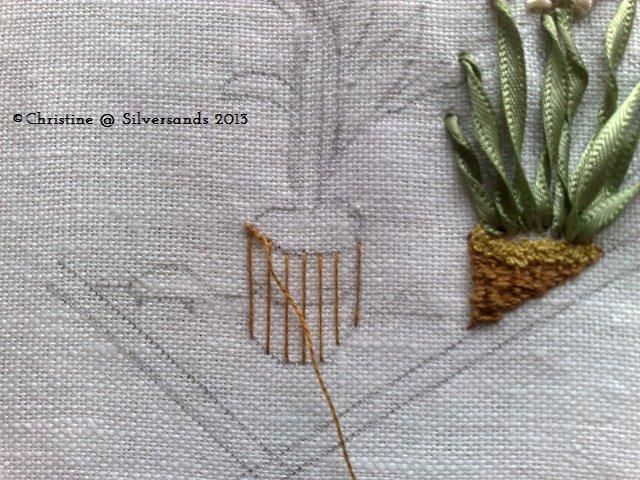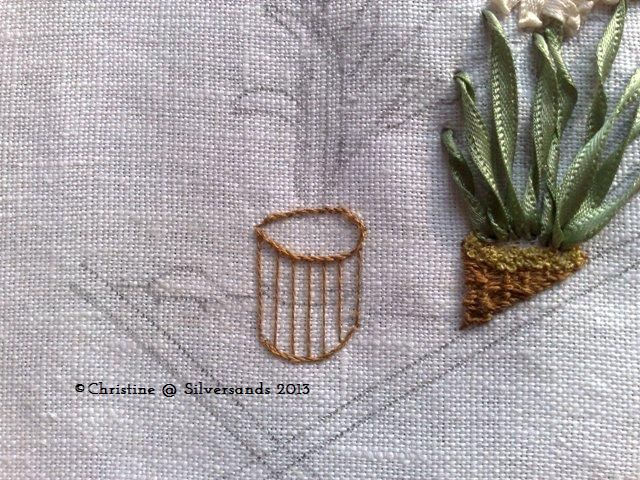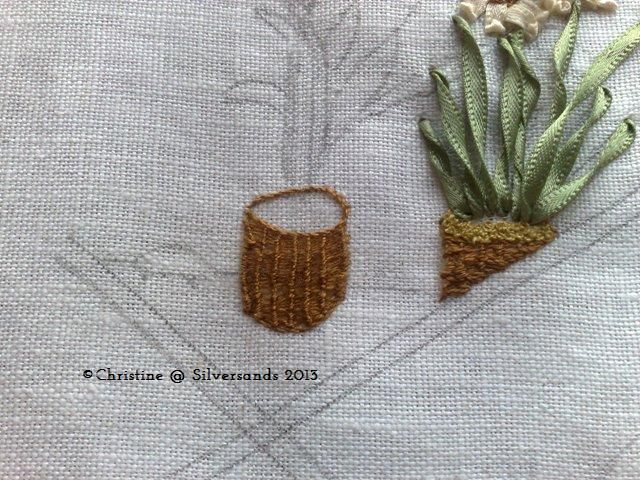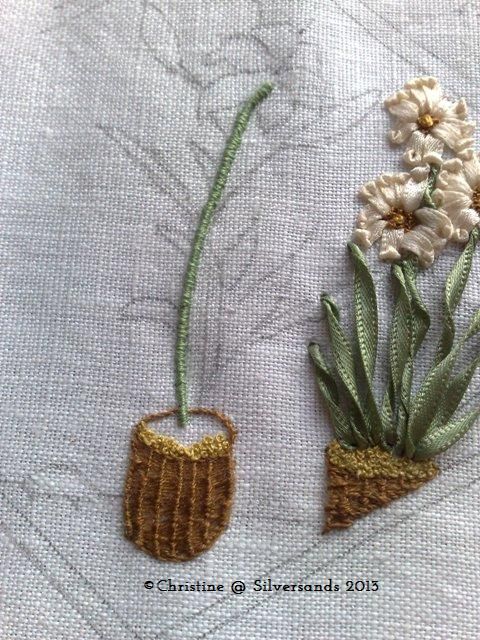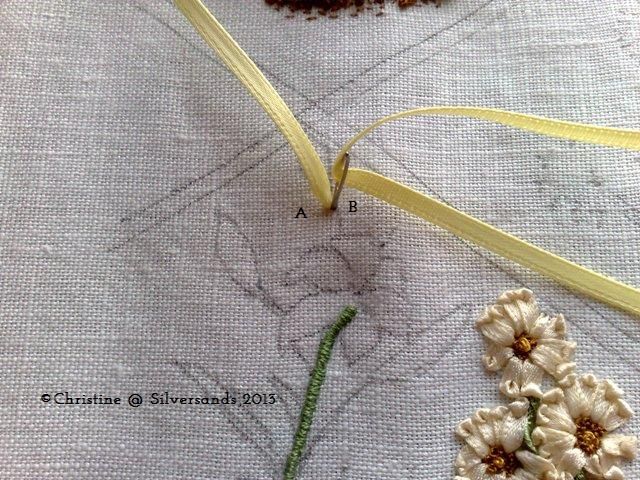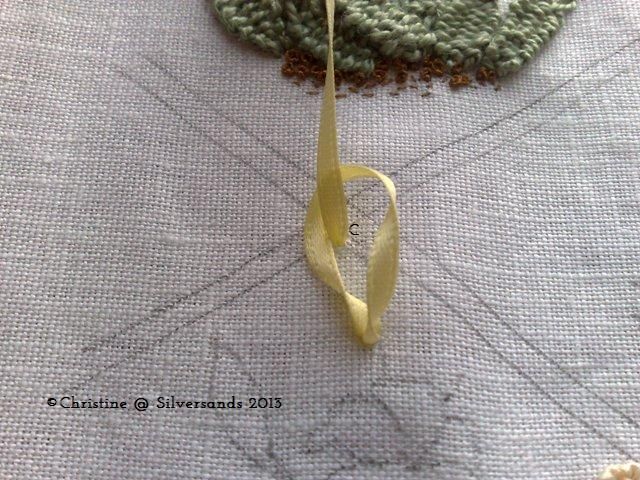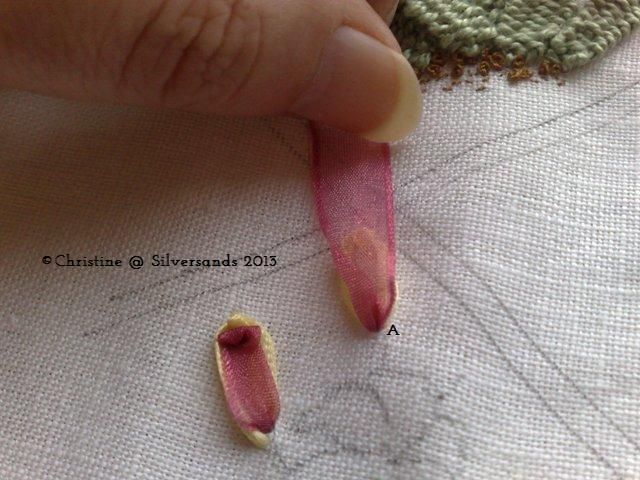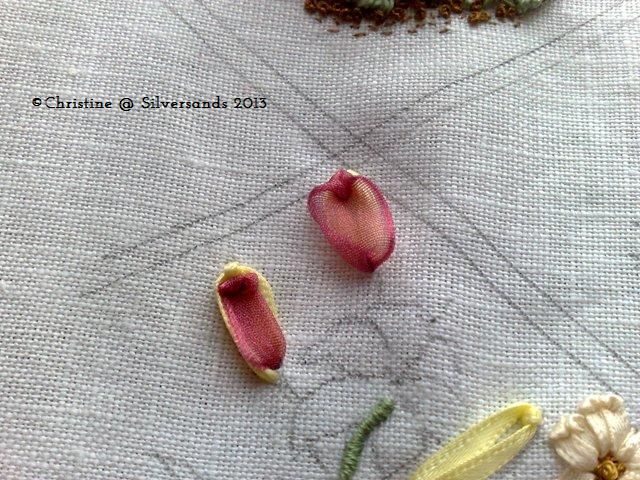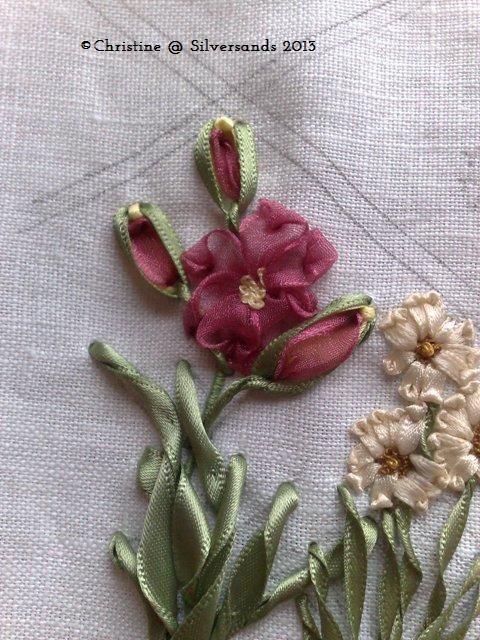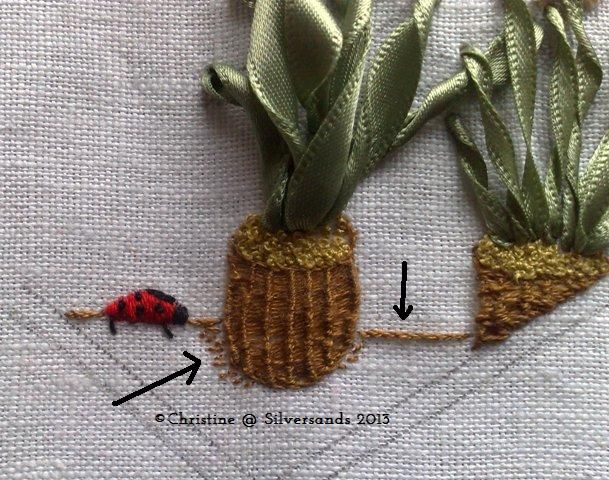Panel 4
Agapanthus,Hollyhocks,Delphiniums &Beetle Daisies.
To save time, I have gone a head with basic stitches we have covered before, (Trying not repeat myself) So we first start with the Agapanthus, the stems are twisted ribbon long stitch, the flowers are made with clusters of 6 tiny straight stitches in a star shape. The buds are padded satin stitch, the leaves are twisted ribbon straight stitch.
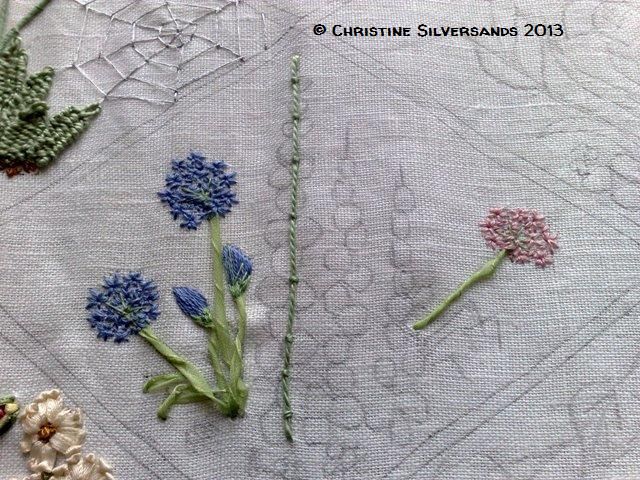
In this picture, the pink Agapanthus leaves are not done as I will wait till the delphiniums are done first. I have also made a start on the stem of the hollyhock which is apple green perle thread couched down.
The next flower is the hollyhock, these are made with cast on stitch with pink perle thread. Cast on stitch is a raised embroidery technique used often in Brazilian embroidery. Its like knitting with your needle & finger pulling the working thread through the cast on wraps the same as you would for bullion knots which we looked at in an earlier panel.
So this is one cast on bullion - looks interesting but is not hard if you already have mastered the bullion, the principle once the wraps are


made is the same. In the next few photos we will finish off this first flower
First off bring your needle up at A

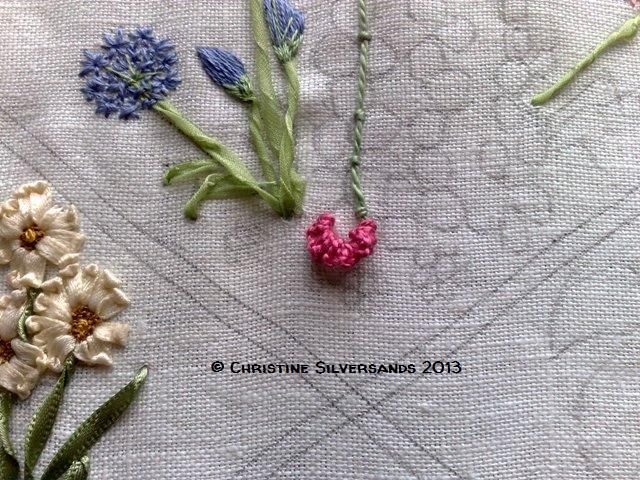
Take a stitch above the first finished side of the petal like this
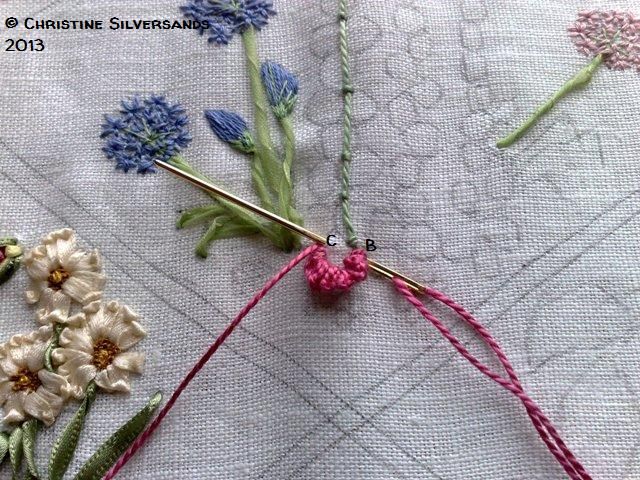
Keep the working thread below the needle, now put your finger through the loop of the working thread
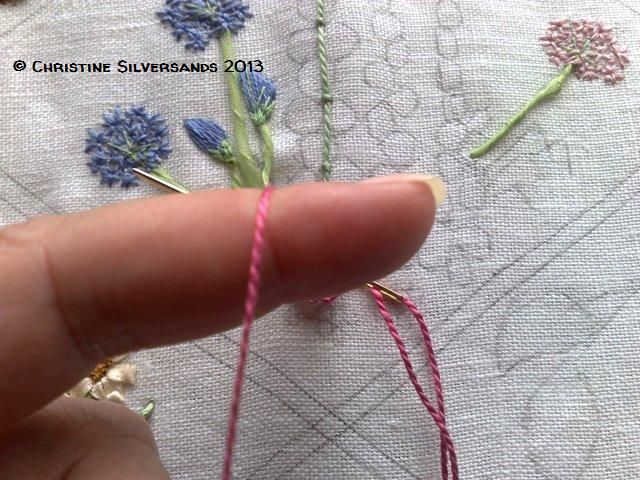
And twist your finger towards you so the working thread crosses
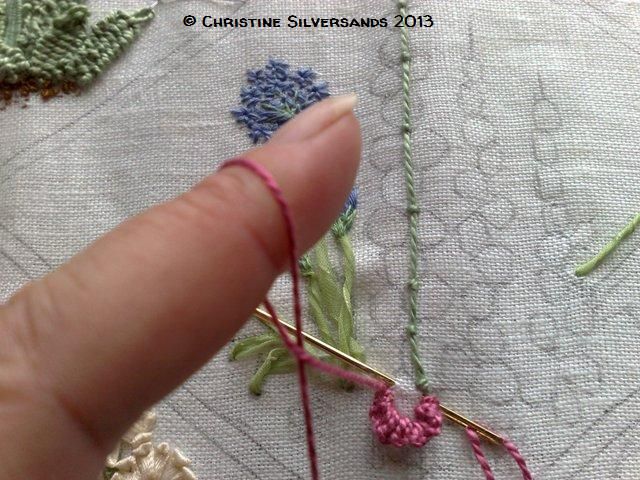
the slip the loop on the needle, use your fingernail to catch the needle so the stitch slips straight on
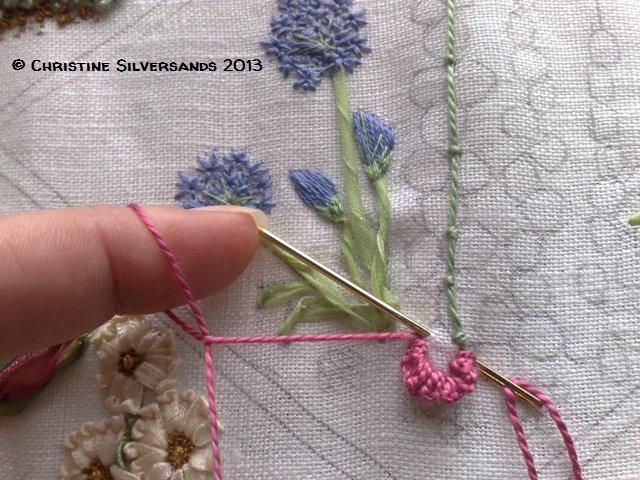

This is your 1st wrap, do the same till you have 20 wraps, then its time to pull the needle through the wraps the same as a bullion
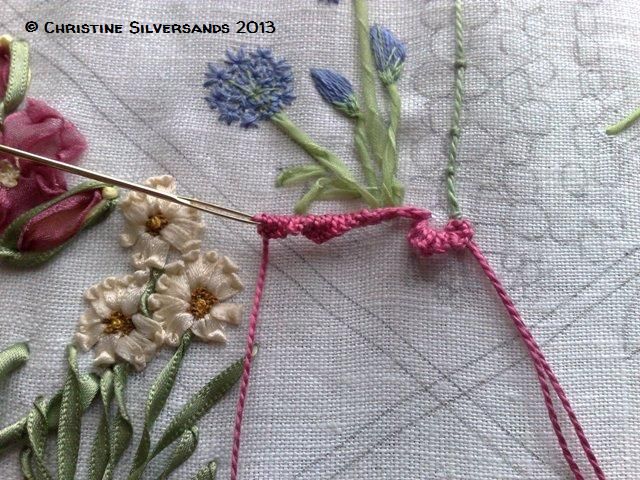
Keep pulling slowly, keeping tension until the wraps slide down the working thread and you can gently pull tight, The stitch will naturally curl and then you can shape round the 1st stitch to form a flower - take the needle down at A
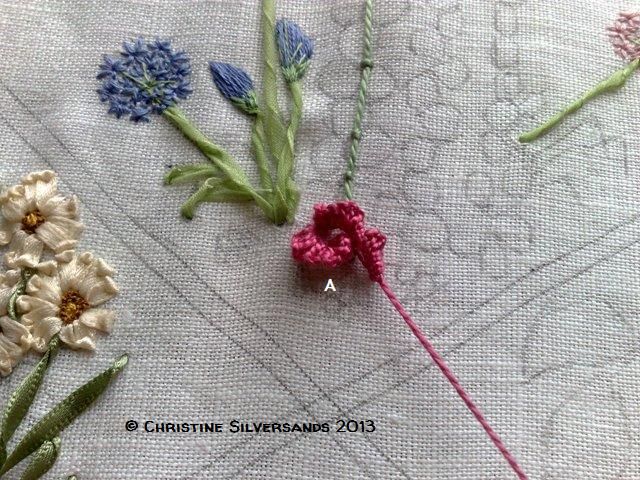
now each flower is made up of 3 cast on stitch petals and the wraps vary, so the 1st stitch is 16 wraps, 2nd is 20 wraps and 3rd is 24 wraps. I kept adding cast on flowers till half way up, as the flowers get smaller cast on stitch becomes too big I used bullion stitch flowers using 5 or 6 wraps. Once all the flowers were complete, I used 6 strands of 292 yellow DMC for French knots with 5 wraps, and we end up with this.
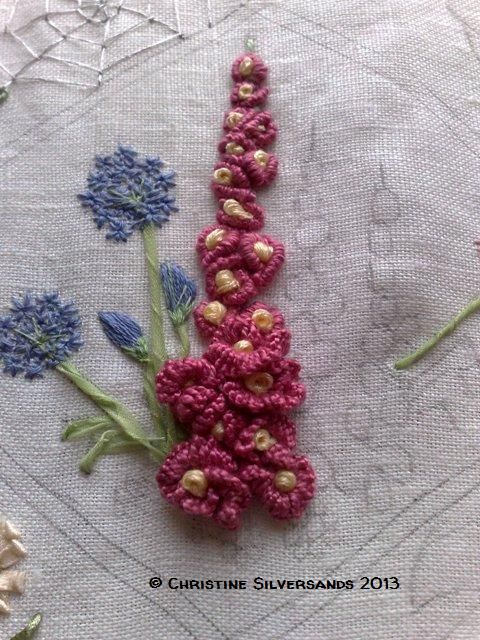
Once all the French knots are in your can faff about with the flowers and tidy them up.
Next comes the Delphiniums.
Starting with the stem which is the same process as the Hollyhock's, long stitch couched. Using a cornflower blue ribbon, I cut 14 lengths at 4cms and 6 lengths at 3 cms.
REMEMBER WHEN USING RIBBON TO SINGE EDGES TO STOP UNRAVELLING
Ribbon cut & singed
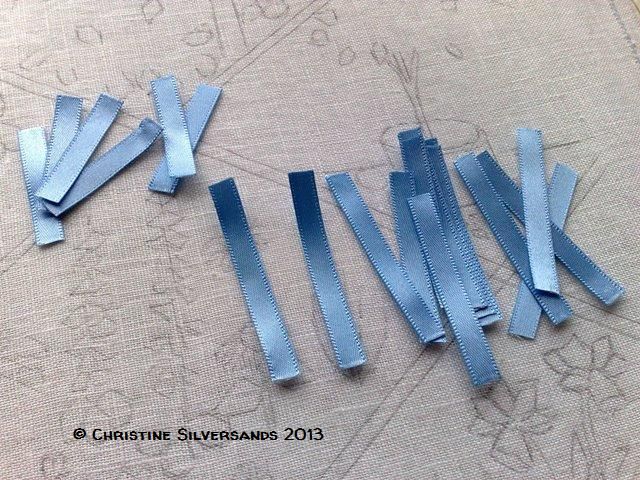
I used DMC 794 matching thread and came up in the centre of the delphinium marking using a 4cm length and made a running stitch down both sides and along the bottom of the ribbon, I fed the ribbon down the thread to the fabric and ruffled it up to make a rosette.
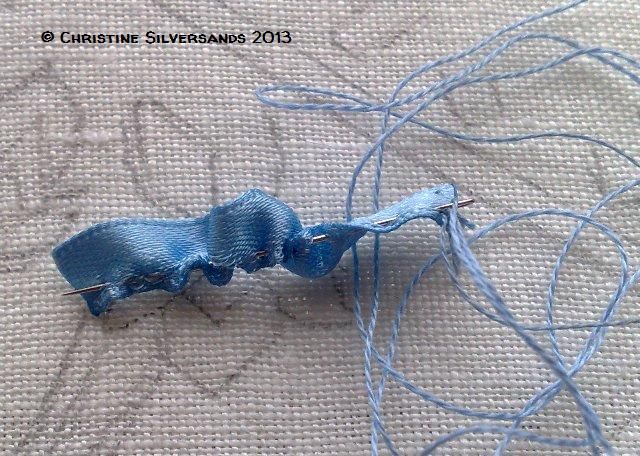
Once you have your rosette close to the fabby, catch the other end of it and plunge in to the fabby, You get this effect
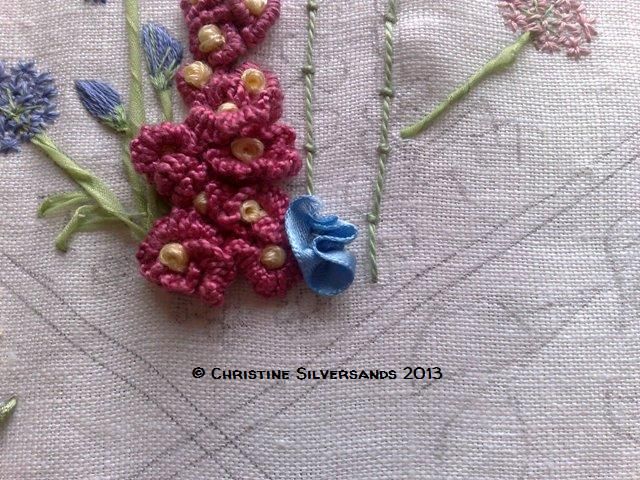
Tidy it up and use the needle to secure it next using the same thread do the same again in the next placement, I used the longer 4 cm ribbons for bigger flowers at the base and then changed to 3cms ribbon nearer the top. Now preference time, you can either add a French knot to the centre of each delphinium or a small bead!!!
I kept filling both delphiniums, then added the leaves for the Pink agapanthus as I could push them under the petals, and then below the hollyhock & delphiniums I used khaki ribbon to make a few ribbon stitches for petals.
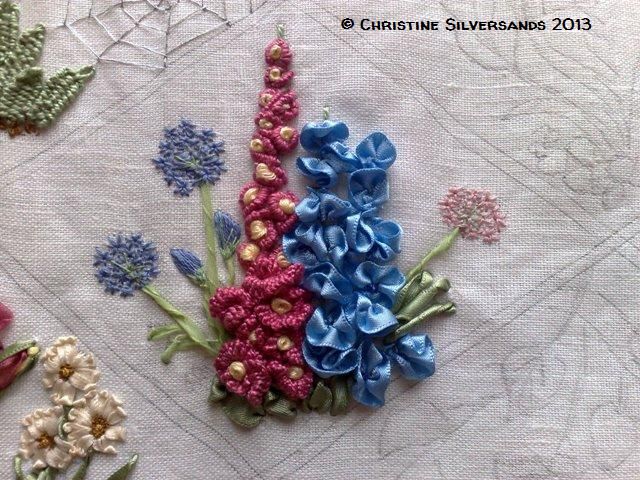
At this point I was on a roll but had to stop as the Beetle daisies require fiery orange ribbon which I need to get.
Threads used, DMC 974 / 292 - apple green 368 anchor perle
Needles - Chenille 18 - Crewel 8 -Straw -3
Ribbons - Groves & Banks - cornflower blue /Khaki / light green organdie
next time Beetle Daisies & Panel finish.
